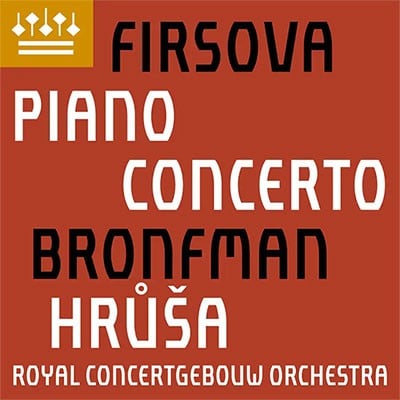3.3.3.3-4.3.3.1-timp.perc(4):tgl/whip/wdbl/tpl.bl/3tom-t/SD/cym/susp.cym/tam-t/t.bells/glsp/vib-strings
Abkürzungsverzeichnis (PDF)
Sikorski
Die Musik meines Doppelkonzerts war sehr persönlich und spiegelte meine Betrachtungen über das Geheimnis und die Bedeutung des Todes wider. Die Einleitung und beide Sätze des Doppelkonzerts basierten auf einem Motiv aus dem letzten Satz von Beethovens Streichquartett op. 135.
Ich erwähne dies, weil mein Klavierkonzert in gewisser Weise eine Art Zwilling meines Doppelkonzerts ist. Dem Material aller drei Sätze liegt wieder ein und dasselbe Motiv zugrunde. Ich tat es am Anfang völlig unbewusst, merkte es erst, als ich den ersten Satz beendet hatte, und war erstaunt, wie sehr sich die Musik von der des Doppelkonzerts unterscheidet!
Ich würde nur sagen, dass ich mich im Klavierkonzert mehr auf die Probleme und Fragen des Lebens konzentriert habe. Am Ende jedoch erscheint unweigerlich die Uhr, die daran erinnert, dass alles sein Ende hat. Wie im Doppelkonzert ist der letzte Satz des Klavierkonzerts der wichtigste und längste Teil der Musik.
Elena Firsova, 2022
Dieses sehr persönliche Werk wurde im Jahr 2020 fertiggestellt, dem Todesjahr von Firsovas Ehemann, dem Komponisten Dmitri Smirnov. Das Konzert spiegelt „ Geheimnis und die Bedeutung des Todes wider“ aus der ständigen Perspektive der „Probleme und Fragen des Lebens … Am Ende jedoch erscheint unweigerlich die Uhr, die daran erinnert, dass alles sein Ende hat“. Das Werk ist ein kompositorischer Zwilling von Firsovas früherem Doppelkonzert für Violine, Violoncello und Orchester (2015), das gleichermaßen vom späten Beethovens inspiriert wurde. Beide Werke basieren auf einem Motiv aus dem letzten Satz von Beethovens Streichquartett op. 135 mit der existenziellen Überschrift „Muss es sein?“. Firsova erweitert das Material durch eine Reihe von Permutationen, gespiegelt, rückwärts und beides zusammen. Nach einem kurzen Andante und einem virtuosen Scherzo ist der letzte Satz ihres Klavierkonzerts der umfangreichste und substantiellste Teil des musikalischen Dramas.
„Firsovas Klavierkonzert erinnert an späte Beethoven-Quartette, nicht in Bezug auf das Vokabular, sondern in Bezug auf das Gefühl einer alternden, kraftvollen Persönlichkeit, die mit Fragen des Lebens und des Todes ringt. ... Bronfman machte Firsovas geisterhafte Arpeggien und donnernde Oktaven zu einem Teil einer fesselnden persönlichen Erzählung, wobei das Orchester das Innenleben des Klaviers zu beleuchten und zu erweitern schien.“
Bachtrack
„Meditativ - wehmütig - eindringlich - flüchtige, hauchzarte Texturen...“
New York Times

Yefim Bronfman, piano/
Royal Concertgebouw Orchestra/Jakub Hrusa
(p) and © 2023 Koninklijk Concertgebouworkest
RCO Live 9733870734

